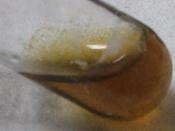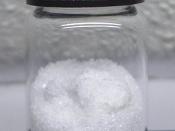Chemistry coursework
Aim:
To investigate and discover the varying rates of hydrolysis of the different isomers of Carbon, Hydrogen and Bromobutane.
Scientific Research:
The collision theory of bimolecular reactions in the gas phase was developed from the kinetic theory of gases. The theory implies that in a reaction between two gaseous substances A and B, a molecule of A must collide with a molecule of B before a reaction can occur. It has been shown that the collision frequency is proportional to the product. If every collision results in reaction, the rate of reaction will therefore equal the collision frequency. The rate of reaction is much less than the rate of collision.
The collision theory was developed for bimolecular reactions in the gas phase, but it has been found to apply to reactions in solution. Although solvent molecules prevent molecules of reactant coming together as frequently as they would in the gas phase, once they have come together, reactant molecules are less able to escape, and will collide repeatedly.
These collisions may result in a reaction.
From this theory comes another known as the transition state theory, which is concerned with the detail during the course of a collision. It follows the energy and orientation of the colliding reactant molecules and then seeks an explanation as to why such a small portion of collisions results in reaction.
Kinetic energy is converted into potential energy as reacting molecules collide, as the reactant molecules move along the reaction coordinate towards the products, the potential energy passes through a peak. This peak is called the activated complex and exists in a transition state.
The hydrolysis of halogenoalkanes are Sn reactions, nucleophilic substitution reactions. In the hydrolysis of primary (and some secondary) halogenoalkanes, two species RX and OHï, are involved in...



Good
Commendable Job...Must use a proper bibliography / site sources.
Grammar seems consistent and so on.
0 out of 0 people found this comment useful.